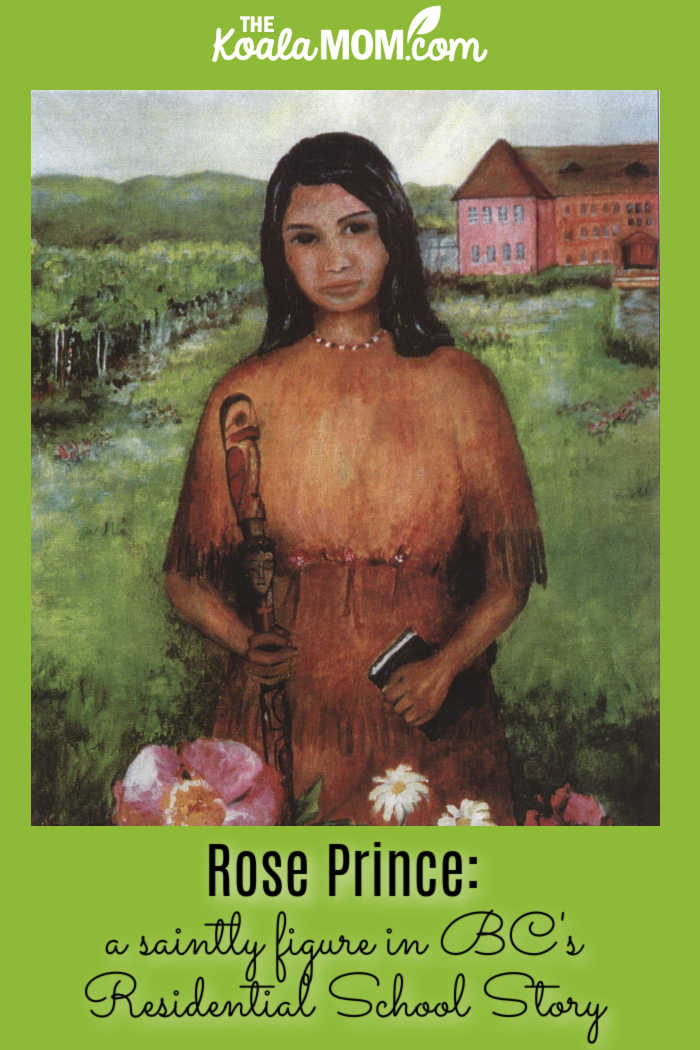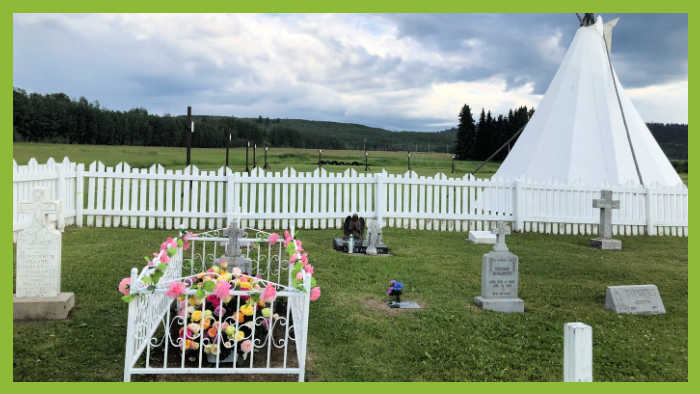The story of Canada’s residential schools is a sad and upsetting time in Canadian history. The Canadian government and local churches attempted to educate First Nations children by removing them from their families and placing them in boarding schools where they were forbidden to speak their languages, practice their faith, or live according to their culture. Due to poor conditions in these schools, abuse and illness were rampant.
However, even in the darkest moments of history, one person can shine a bright light of hope and faith. The story of Rose Prince, a First Nations girl in northern BC, is one of those people.

Who was Rose Prince?
Rose Prince was born in Fort St. James, BC, on August 21, 1915. Her parents had met each other and married at the residential school at Williams Lake, BC. Both of them were strong Catholics. Her father came from a long line of leaders among the Carrier people and was the custodian of the local parish. He led prayers and singing in church and served as the interpreter for the priest there. Rose’s mother had been raised by nuns and was known as a kind, gentle woman of deep faith. Rose was the third of their nine children.
With some of her siblings, she was sent to the residential school at Lejac when it opened in 1922. She was an excellent student who learned her lessons well and helped her fellow students with theirs. One of her teachers described her as “a hard worker and a brilliant student, kind, lovely, gentle and compassionate.” She enjoyed painting, beading, and needlework. Rose also helped take care of the linens used during Mass and spent hours in prayer, despite back problems that made it difficult for her to kneel.
Although only English was allowed to be spoken at the school, Rose was able to hold onto her first language. She translated prayers and hymns in Dakelh and taught other students to pray and sing. Like St. Jean de Brebeuf in Eastern Canada, Rose made her faith accessible and relevant to her people.
When was Rose was 16, her mother and two younger siblings died during an influenza outbreak. Rose chose to stay at the school to care for the children there rather than return home. She told her cousin that “our Blessed Mother and her son Jesus, they are my parents. I feel so close to them here, I just don’t want to go out and I have no intention of going anywhere.”
After graduating from the school, Rose remained on as part of the staff. She did secretarial work, mending, cleaning, embroidering and sewing and also taught the younger children how to read. She often sang or hummed as she worked and kept her hands busy with beadwork or crocheting. She continued to practice her faith, praying often and receiving the Eucharist daily.
She contracted tuberculosis and died on August 19, 1949, at the residential school. She was buried on her 34th birthday.
The Legacy of Rose Prince
Two years after Rose’s death, her body and several others were exhumed from the cemetery to be moved to another location. During the process, Rose’s coffin broke open and the workers were amazed to find her body incorrupt. Witnesses were called and other coffins opened, but every other body was found to be decaying, even those buried after Rose. In contrast, Rose looked as if she were only sleeping, with a bit of a smile on her face.

The Lejac residential school was closed in 1976 and the Nadleh Indian Band destroyed it. Today, only the cemetery and a memorial to Rose Prince remain.
In 1990, the local priest organized a pilgrimage to Lejac to honour the memory of Rose Prince. From the twenty people who attended that first event, the pilgrimage has grown until nearly 1200 people attended in 2004.
Many people who have attended the pilgrimages since 1990 have reported healings. Others say they can smell roses at her grave, although no flowers grow in the area. The pilgrimages draw together people who want to share their faith, but also people seeking healing and answers from the pain of their residential school years.
At the 2004 pilgrimage, Bishop Gerald Wiesner noted that Rose Prince “was a rather ordinary person. She lived her human life fully and her faith life deeply in a rather extraordinary way. That is probably the greatest appeal she has.” Like Mary and Joseph in Nazareth, Rose’s life was mostly one of unseen service to others.
The story of Rose Prince is one of a young woman who spent her life as a cradle Catholic, growing in a state of extraordinary virtue while inspiring others to do the same. ~ B.C. Catholic
For more information about Rose Prince and the 2024 pilgrimage, drop by the Diocese of Prince George website.
The cause for Rose Prince’s canonization has not yet been opened. However, the holiness of her life, her incorruptible body, and the healings that have been attested to her intercession since make her seem a likely candidate for sainthood. She could be BC’s first saint and Canada’s second First Nations saint.

2 Comments
Is there any books written about her? Do we know more about her life?
I’m unaware of any books about her and her life. What I found online was generally the same basic information about her. It would definitely be lovely to learn more.